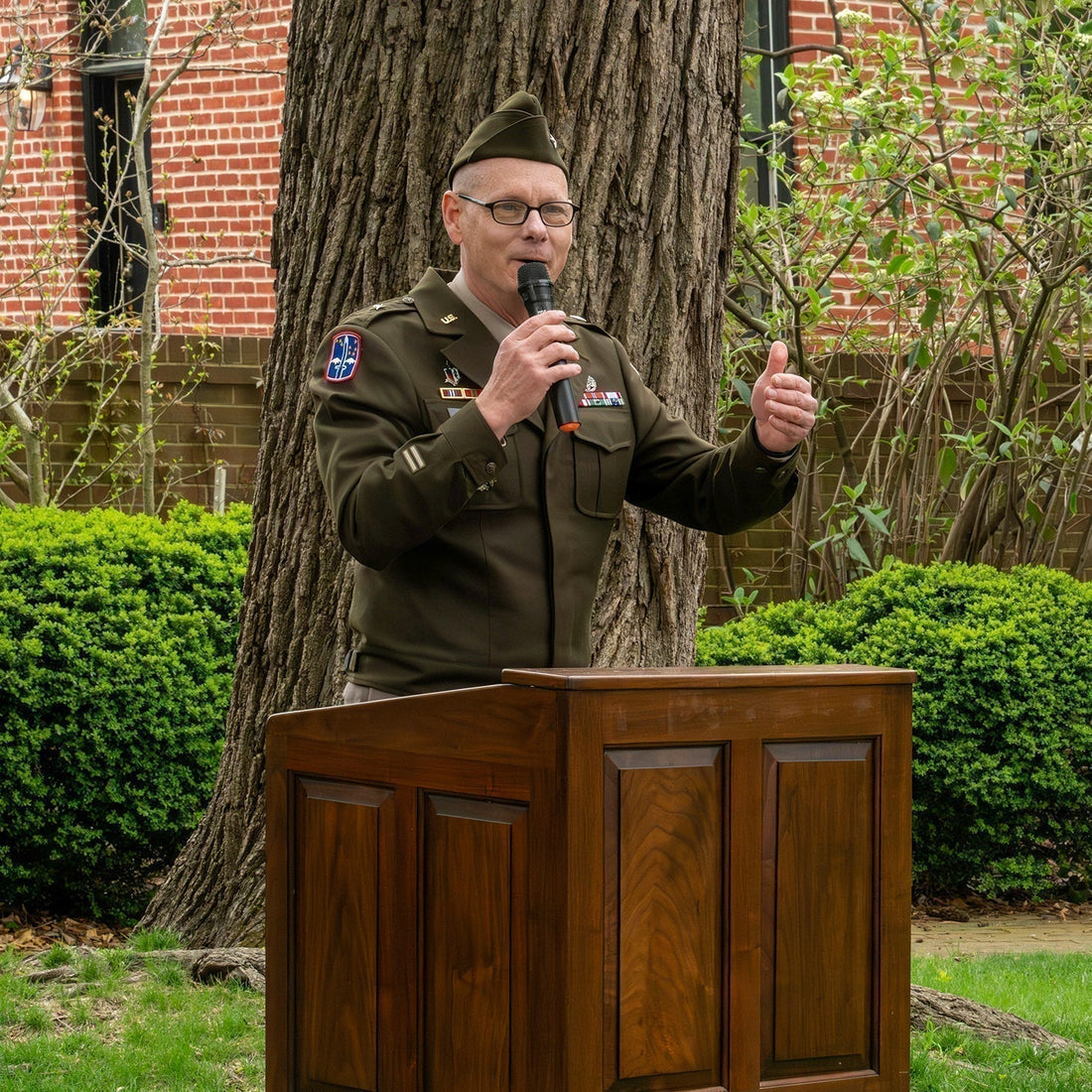ABOVE: U.S. Army Brigadier General Lance Raney, Commanding General of Medical Readiness Command, East, addresses the attendees.
On April 5, 2025, the Lee-Fendall House Museum held an event to commemorate the 160th anniversary of the closure of Grosvenor Branch Hospital, a Union Army medical facility during the Civil War. Our program coincided with the 250th anniversary of the United States Army Medical Department, offering a detailed look at military medicine in the 1860s.
Between 1861 and April 1865, the Union Army utilized the Lee-Fendall House (which they called "the rebel house on Oronoco Street") as Grosvenor Branch Hospital, where over 1,000 soldiers were treated for injuries and illnesses. Archival records indicate a high mortality rate, with many patients dying due to the era’s limited medical knowledge and resources. The hospital’s history provides insight into Civil War-era practices, including the use of chloroform anesthesia, amputation as a primary surgical intervention, and the gradual recognition of sanitation’s role in patient outcomes.
 Madeline Feierstein unveils the historical marker.
Madeline Feierstein unveils the historical marker.
The event featured a series of activities designed to illuminate this history. A plaque was dedicated to note the building’s wartime function, followed by a reading of names from hospital death registers, sourced from contemporary records.
An address was made by the U.S. Army’s Brigadier General Lance Raney, the Commanding General of Medical Readiness Command, East. “I want to say thank you for honoring the soldiers that were both doing the treatment in this organization or this this hospital and those that received the treatment in this hospital,” Raney said. “Today I know we’re going to recognize 100 that that died in this facility. But just as important are all of the others: because I think it was 1,700 or so that were treated in one way or other in this organization. Thank you for helping us honor those that allowed them to actually go home. That's 1,600 that we’re not going to mention today, but [who are] just as important.”
The special event was well-attended, with Alexandria’s Vice Mayor Sarah Bagley and Councilman Canek Aguirre present for the dedication.
Guided tours navigated the rooms used for medical care, highlighting their conversion into wards and operating spaces. Displays included original and replica medical tools—such as tourniquets, scalpels, and bullet extractors—alongside excerpts from surgeons’ logs, which detailed the challenges of treating severe wounds and rampant infections like gangrene.
Lectures by historians explored the broader context of Civil War medicine, addressing innovations like triage systems and the obstacles posed by inadequate sterilization and pharmaceutical shortages. The program drew on primary sources, including soldier letters and hospital inventories, to present a grounded account of the experiences within Grosvenor Branch Hospital.
 Dr. Edwin Bentley (1824–1917), chief surgeon at the Grosvenor Hospital, was portrayed by historical reenactor John Wells.
Dr. Edwin Bentley (1824–1917), chief surgeon at the Grosvenor Hospital, was portrayed by historical reenactor John Wells.
The commemoration offered a focused examination of the Lee-Fendall House’s role in the Civil War, emphasizing historical precision and the complexities of medical care during a pivotal era. Attendees gained a deeper understanding of the site’s significance and its place within the evolution of American military medicine.
 A short ceremony honored the soldiers who passed away at the Grosvenor Branch Hospital as each of their names was read.
A short ceremony honored the soldiers who passed away at the Grosvenor Branch Hospital as each of their names was read.
The program was made possible by the research of Madeline Feierstein, a local historian who has done significant investigation of Alexandria’s Civil War history, particularly its military hospitals and prisons. As a docent at the Lee-Fendall House Museum, Madeline has created our popular Civil War Hospital Tour. Her work also underpinned our current exhibit: From Battlefield to Bedside: Alexandria’s Civil War Medical History. Visit the Lee-Fendall House to see the exhibit for yourself!

